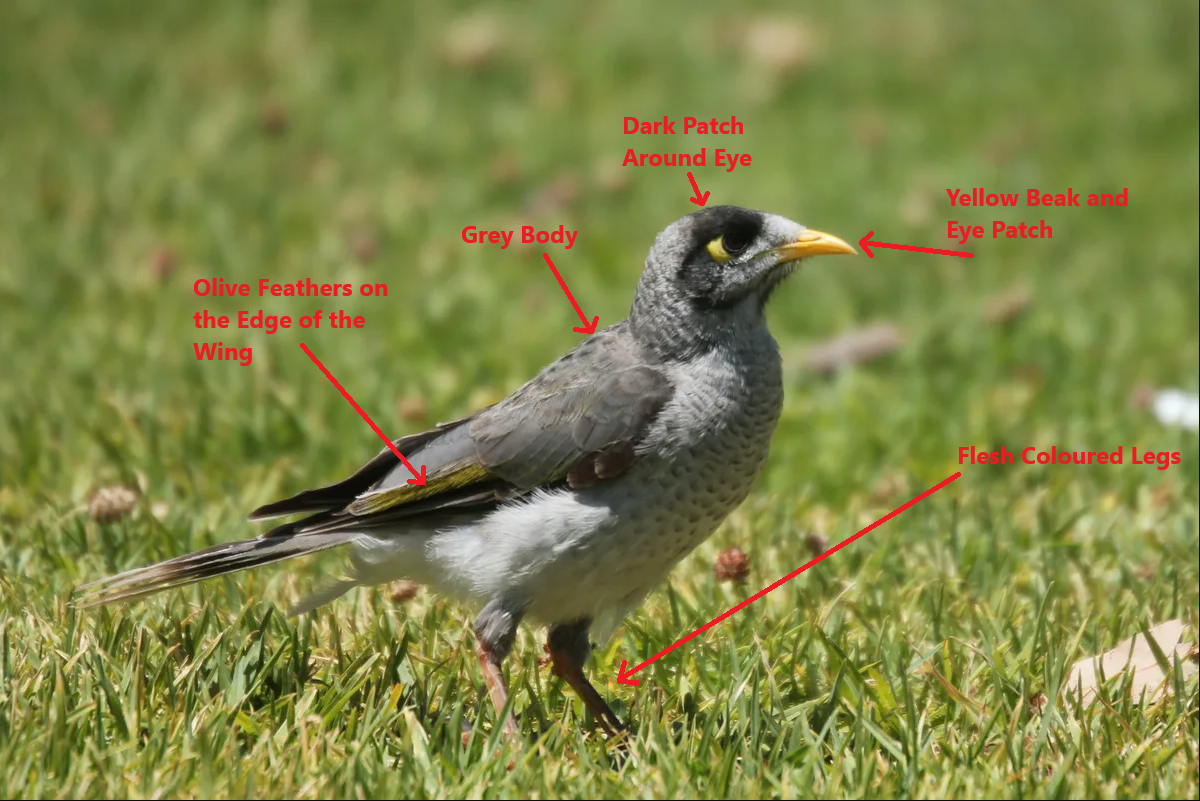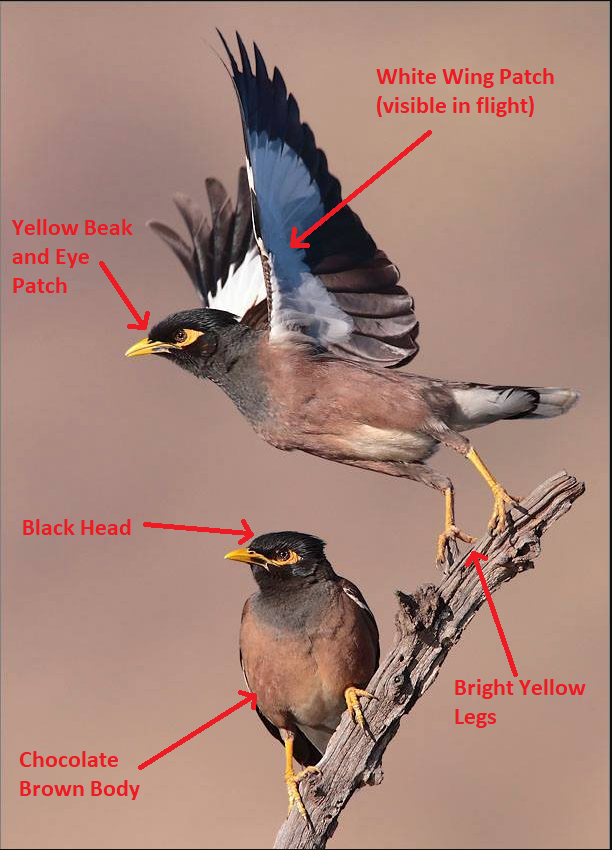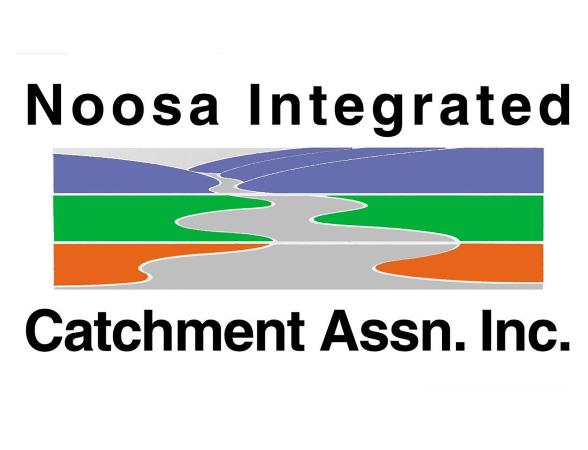A native of southern Asia and parts of the Middle East, Indian Mynas or Common Mynas (Acridotheres tristis) as they are also known, are an open woodland bird that has adapted very well to the disturbed environments created by humans worldwide. Their global distribution and population sizes have increased so rapidly over the last 200 years that they are now one of only 3 birds to find a place on to the International Union for the Conservation of Nature’s (IUCN) 100 Worst Invasive Species List. In the late 1800’s, in their native range, Mynas had a reputation as “farmers’ friends” because they were believed to act as a form of biological control against insect pests in crops and gardens. This reputation however, was based on anecdotal information, as at the time, little to no scientific research had been undertaken to better understand Myna bird behaviour. The consequences of this lack of research became clear when in 1862, a number of adult birds were brought to Australia from India and deliberately released in to the market gardens in Melbourne in an attempt to control the insect pests. This attempt proved to be completely unsuccessful but the birds thrived in the local conditions, quickly establishing breeding populations in the wild. Despite the failed attempt in Melbourne, two decades later in 1883 a number of Mynas were relocated to Cairns and surrounding areas in North Queensland intended to control the Cane Beetle which was decimating Sugar Cane crops in the region. Since that time Indian Myna birds have proliferated eastern Australia with the most significant populations being in the Canberra and Cairns regions where there is an estimated density of more than 1000 Myna birds per square kilometer.
What’s the problem?
Indian Mynas are intelligent, aggressive birds that build their nests in tree hollows and roof cavities. 17% of native birds, 42% of native mammals and 28% of native reptiles utilize tree hollows for breeding or shelter. The excessive tree clearing for human activities over the last 100 years, coupled with the fact that it takes 100 to 200 years for most hollow bearing tree species to produce suitable hollows has meant that this wildlife real estate is in short supply. The Indian Mynas’ aggressive nature gives them the ability to easily exclude or evict many native species from their tree hollow homes, and there are many reports of them destroying eggs, killing chicks and even evicting large species like Kookaburras and Dollar Birds. It has also been reported that once Indian Mynas have occupied a hollow no native species will favor that site for several years after. They also act as a reservoir for diseases such as Avian Malaria that affect native birds.

Identification
Indian Mynas are a member of the Starling family STURNIDAE, and are often confused with the Noisy Miner which is an Australian native and member of the Honey Eater family MELIPHAGIDAE. See the differences below.
Indian Myna
Indian Mynas are a medium size bird 23cm to 26cm long, 12cm to 15cm wingspan, with a chocolate brown body, black head, yellow beak and eye patch, long yellow legs and a white wing patch which is visible during flight. They spend a lot of time on the ground in open spaces such as lawns and sporting fields and walk or strut rather than hop like most birds.

Noisy Miner
Noisy Miners are slightly smaller than the Indian Myna and have a grey body and head with a darker (black) patch on the cheek and brow. Noisy Miners also have a yellow beak and eye patch, flesh coloured legs and olive feathers on the wing tips. Noisy Miners generally spend less time on the ground than Indian Mynas and hop rather than walk.
What can be done?
The most effective way to discourage Indian Mynas from your property is to retain or restore as much native habitat as possible. The Indian Mynas’ success in Australia is largely due to the fact that humans have created an environment that favours them and is often unsuitable for many native species. Indian Mynas prefer open spaces and love lawns so reducing lawn areas and replacing them with native plants of differing heights (groundcovers, small shrubs and trees) will make your yard less attractive to them and more attractive to native birds. Indian Mynas are opportunistic omnivores meaning they are always on the lookout for an easy feed of whatever is on offer. Limiting access to pet food, rubbish bins, food scraps and bird feeders intended for native birds will also make your property less attractive to them. Species specific traps are also an option but there are a range of things that need to be considered before undertaking trapping such as animal welfare and the likelihood that trapping alone will deliver environmental gains without appropriate habitat reinstatement.
Ryan Heeney
Further information can be found at the following links.
https://www.daf.qld.gov.au/__data/assets/pdf_file/0020/62066/indian-myna.pdf
https://www.bellingerlandcare.org.au/wp-content/uploads/IndianMynaHandbook.pdf


